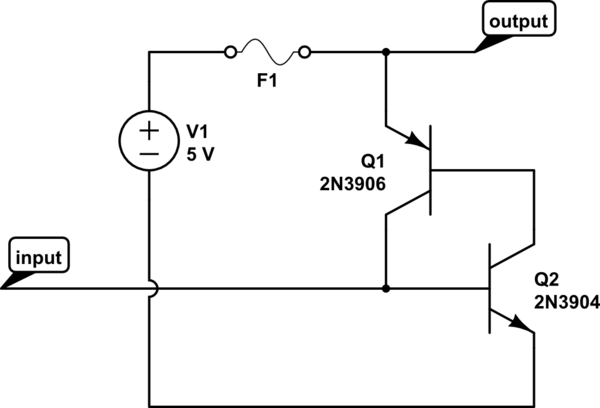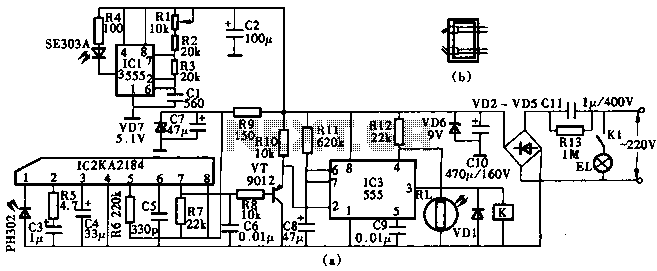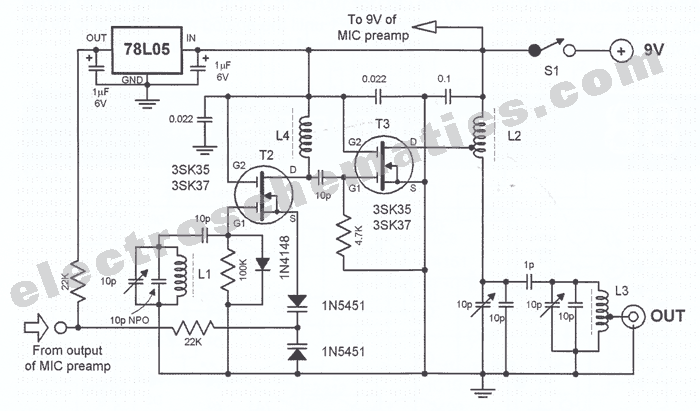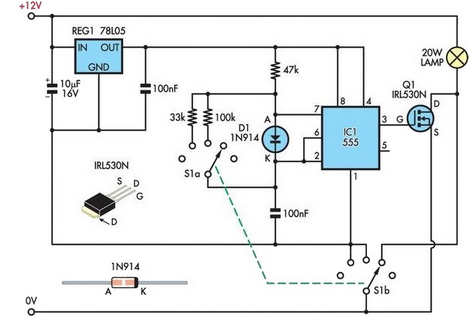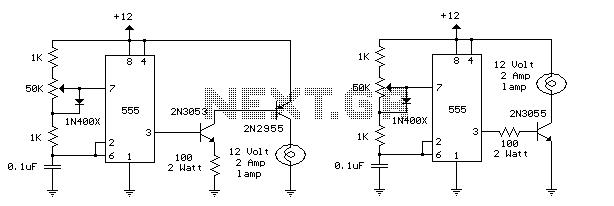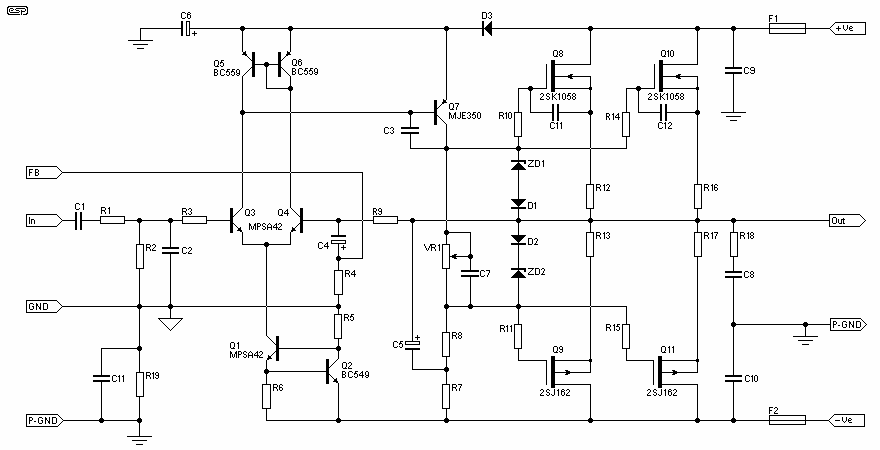
Dimmer With A MOSFET
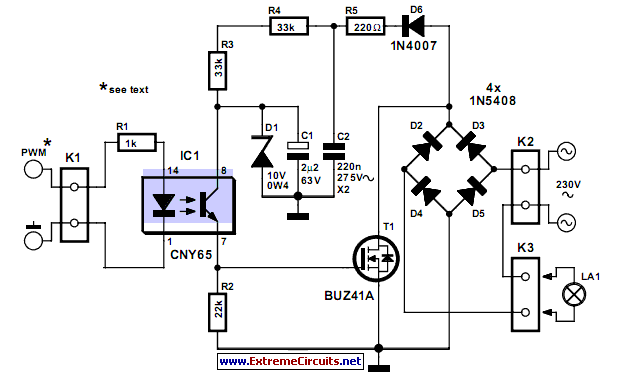
This circuit demonstrates that dimmers designed for mains voltage do not always require a triac. In this case, a MOSFET (BUZ41A, 500 V/4.5A) is utilized in a diode bridge configuration.
The described circuit employs a MOSFET as the primary switching element for dimming applications at mains voltage. The BUZ41A is a N-channel MOSFET capable of handling a maximum voltage of 500 V and a continuous drain current of 4.5 A, making it suitable for typical residential lighting applications. The use of a diode bridge allows for the conversion of AC voltage to a pulsed DC voltage, which the MOSFET can effectively control.
In operation, the MOSFET is driven by a control signal that modulates its gate voltage, allowing for the adjustment of the power delivered to the load. When the gate voltage exceeds the MOSFET's threshold voltage, the device turns on, allowing current to flow through the load. By varying the duration of the gate signal, the average power supplied to the load can be controlled, achieving the desired dimming effect.
This configuration eliminates the need for a triac, which is traditionally used in dimmer circuits, thereby simplifying the design and potentially enhancing reliability. The MOSFET's faster switching capabilities can lead to improved efficiency and reduced heat generation compared to triac-based designs.
Additional components may include resistors for gate biasing, capacitors for filtering, and protection diodes to safeguard the MOSFET from voltage spikes. Proper thermal management is also essential to ensure the MOSFET operates within its safe limits, as excessive heat can lead to failure.
Overall, this circuit exemplifies a modern approach to dimming solutions, leveraging the advantages of MOSFET technology while providing a robust alternative to traditional triac-based dimmers.This circuit shows that dimmers intended for use at mains voltage do not always have to contain a triac. Here, a MOSFET (BUZ41A, 500 V/4.5A) in a diode br.. 🔗 External reference
The described circuit employs a MOSFET as the primary switching element for dimming applications at mains voltage. The BUZ41A is a N-channel MOSFET capable of handling a maximum voltage of 500 V and a continuous drain current of 4.5 A, making it suitable for typical residential lighting applications. The use of a diode bridge allows for the conversion of AC voltage to a pulsed DC voltage, which the MOSFET can effectively control.
In operation, the MOSFET is driven by a control signal that modulates its gate voltage, allowing for the adjustment of the power delivered to the load. When the gate voltage exceeds the MOSFET's threshold voltage, the device turns on, allowing current to flow through the load. By varying the duration of the gate signal, the average power supplied to the load can be controlled, achieving the desired dimming effect.
This configuration eliminates the need for a triac, which is traditionally used in dimmer circuits, thereby simplifying the design and potentially enhancing reliability. The MOSFET's faster switching capabilities can lead to improved efficiency and reduced heat generation compared to triac-based designs.
Additional components may include resistors for gate biasing, capacitors for filtering, and protection diodes to safeguard the MOSFET from voltage spikes. Proper thermal management is also essential to ensure the MOSFET operates within its safe limits, as excessive heat can lead to failure.
Overall, this circuit exemplifies a modern approach to dimming solutions, leveraging the advantages of MOSFET technology while providing a robust alternative to traditional triac-based dimmers.This circuit shows that dimmers intended for use at mains voltage do not always have to contain a triac. Here, a MOSFET (BUZ41A, 500 V/4.5A) in a diode br.. 🔗 External reference
